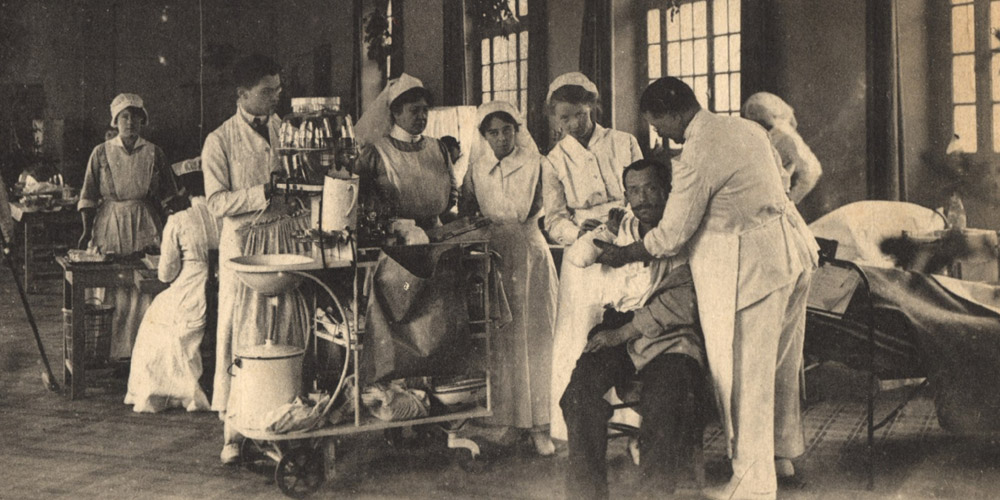
| « Previous | All topics | Next » |
U.S. Neutrality: 1914 - 1917Relief Efforts and Volunteers
Feeding a nation
Immediately after the war began, Belgium faced a food crisis. The country imported most of its food, but it was now isolated by the German occupation and the British blockade.
An American-led group founded the Commission for the Relief of Belgium (CRB). Headed by future U.S. president Herbert Hoover, the all-volunteer effort raised funds, collected food supplies, chartered cargo ships, and organized distribution efforts. All the while, it navigated its way through a complex web of diplomatic and military considerations in order to ensure that food reached Belgian civilians.
The CRB fed 7.3 million Belgian and 2 million French civilians between 1914 and 1919. It demonstrated that humanitarian relief could be successfully delivered into an active war zone, and set a standard followed by aid organizations to this day.
Saving lives
When war broke out, Americans living in Paris organized a field hospital and ambulances to help the French Army. This effort evolved into the American Ambulance Field Service (later the American Field Service, or AFS) through which volunteer drivers helped save the lives of thousands of wounded French soldiers. Other organizations raised ambulance units in France and on other fronts. Ernest Hemingway famously drove for the Red Cross in Italy. Most volunteers paid their own way to Europe, and covered their own expenses.
American women played a large role in providing medical support to Allies. A number drove ambulances, many more were nurses, and some wealthy women funded and ran hospitals. One newlywed bride and her husband even spent their honeymoon volunteering in France in 1915.
Joining the fight
Despite U.S. neutrality, many young American men were eager to join the action, especially on the Allied side. Thousands crossed into Canada to join the British war effort. Others, including the poet Alan Seeger, served with the French Foreign Legion.
Some American volunteers flew with the Lafayette Flying Corps or the Lafayette Escadrille, attached to the French Air Force. Many of these orig- inally volunteered with the American Field Service. Others came from the Foreign Legion, including Eugene Bullard, the first black fighter pilot.
When America entered the war, most of these volunteers were transferred to U.S. command. Bullard was denied a position in the U.S. Army Air Service, due to his race. Yet he, like many other American volunteers, received numerous honors and decorations from the French government.
| « The Debate over Intervention | All topics | America Enters the War » |
Featured links:

The Volunteers: Americans Join the War, 1914-1919
Lesson plan series examining the volunteerism of U.S. Americans, primarily during the period of U.S. neutrality. | AFS (formerly American Field Service)
Lessons/resources

Search the National WWI Museum & Memorial Resource Database
More resources/lessons
» Poet Alan Seeger
Profile of the writer of "I have a Rendezvous with Death" (an American in the French Foreign Legion) | HISTORY
» U.S. American Women's Volunteerism and Suffrage during World War I
| AFS (formerly American Field Service)
» U.S. American Volunteers in World War I, 1914-1917
Four interrelated lesson plans; part of a comprehensive curriculum on American Volunteerism in World War I.
» Library of Congress: World War I
Homepage for the Library of Congress' extensive WWI collections and resources. | Library of Congress